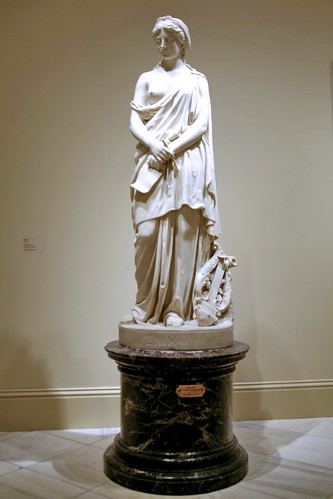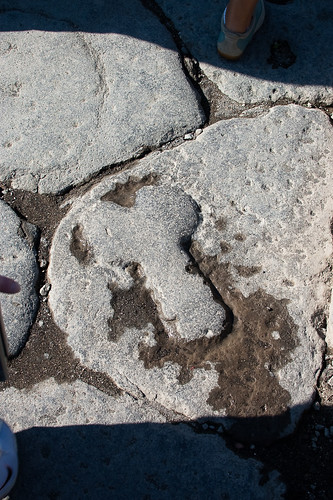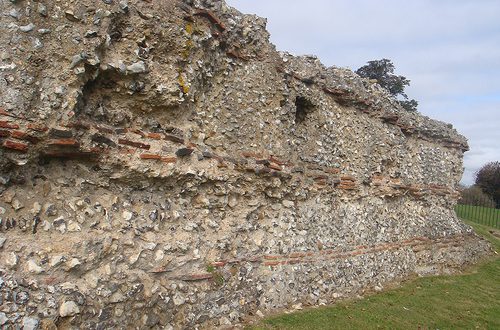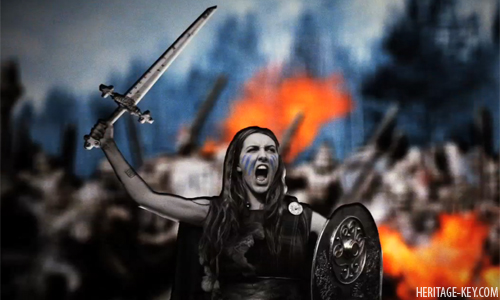 We’ve come a long way from the time when Ugg would mutter inanities to Uggetta in the cave, present her with a wad of crushed up flowers and move in for the kiss- and if she resisted he would reach for his club, gives it the old ‘knock on the head and drag away’ routine. Nowadays, for example, we do all the inanities on dating websites or in noisy bars. The rules of romance and courting have been shifting rapidly in the last 50 years and now many people are so clueless as to what they are supposed to do that they’re paying experts to teach them how to make that connection. Our expectations from marriage and our relationships are also different. How much has the nature of what is perceived as ‘romantic’ changed from the past? How much do we even know about what brought people together thousands of years ago? Is the modern relationship of mutual attraction to bring mutual happiness one which existed in the past, and how do archaic relationships sit with our modern morals?
We’ve come a long way from the time when Ugg would mutter inanities to Uggetta in the cave, present her with a wad of crushed up flowers and move in for the kiss- and if she resisted he would reach for his club, gives it the old ‘knock on the head and drag away’ routine. Nowadays, for example, we do all the inanities on dating websites or in noisy bars. The rules of romance and courting have been shifting rapidly in the last 50 years and now many people are so clueless as to what they are supposed to do that they’re paying experts to teach them how to make that connection. Our expectations from marriage and our relationships are also different. How much has the nature of what is perceived as ‘romantic’ changed from the past? How much do we even know about what brought people together thousands of years ago? Is the modern relationship of mutual attraction to bring mutual happiness one which existed in the past, and how do archaic relationships sit with our modern morals?
Going waaay back – Neolithic love
Neolithic culture is first seen in the Levant from around 9500 BC and was replaced by the Chalcolithic (Copper tools) and then bronze ages. Neolithic, meaning ‘new stone age’ societies had knowledge of sedentary agriculture and had domesticated some species of animals, they used pottery and often lived in mud-brick type simple houses. People lived amongst their tribes and social hierarchies were making their first appearances, in simple forms, but mainly egalitarianism was order of the day (due to ignorance of anything else). Neolithic tools made it possible for farmers to harvest a surplus, but the aim of Neolithic life was still survival- so what does that mean for neolithic love? It stands to reason that a farmer with progressive technology would have a better harvest than his rival, stand a better chance of survival and be more attractive to women.
The neolithic period saw the start of ritualised and official marriage and brings us the earliest joint burials. In 2007 a pair of late Neolithic skeletons were found in Mantua, in Italy, the male skeleton locked in an embrace with the female- two lovers with eternal affection.
Neolithic marriage would take place at holy sites, such as stone circles. The magic powers of the stones could bless a marriage and oaths sworn to each other on the stones were held as sacred. Phallic stones could bring fertility to the marriage.
Agriculture changed the frequency of childbirth amongst women, who no longer had to carry the single child as in nomadic or hunter gather societies. Therefore second and third children came sooner. This would have helped to forge closer bonds between the husband and wife, who had shared property and could sleep together in the same place night after night surrounded by their belongings. As the concept of property ownership developed so too did awareness that others had more – we can speculate then that the first arranged marriages between a man who wanted a wife and the ability to exchange something with her kin took place. The concept of the dowry came into existence as compensation to the family for the loss of an able worker.
It is strange that the freedom to be with whom we like, and are attracted to, is something we in the west view as inherently more civilised than arranged marriages. However it was the birth of society and civilisation which actually diminished the care-free love matches of pre-history and made marriage a form of trade or obligation.
Into Civilisation: The Near East
Thanks to the code of laws left by Hammurabi of Babylonia we have a good idea of marriage in Babylon. The laws are extensive and cover many possible situations which might arise. Babylonian marriages took place after the signing of contracts, some of the laws elaborate on this business like form of relationship:
If a man marry a woman and she bear him no sons; if then this woman die, if the “purchase price” which he had paid into the house of his father-in-law is repaid to him, her husband shall have no claim upon the dowry of this woman; it belongs to her father’s house.
The obligations are two way, the husband must fulfil his supportive duties:
If a man take a wife, and she be seized by disease, if he then desire to take a second wife he shall not put away his wife, who has been attacked by disease, but he shall keep her in the house which he has built and support her so long as she lives.
The Babylonian system seems to be all about procreation and marriage as a duty, free from Romance. However, this particular law uses emotive language which tells us there was more to it:
If a man wish to separate from a woman who has borne him children, or from his wife who has borne him children: then he shall give that wife her dowry, and a part of the field, garden, and property, so that she can rear her children. When she has brought up her children… She may then marry the man of her heart.
It is that last phrase man of her heart which tells us women’s desires were of importance.
In 1880 (AD) a Sumerian tablet dating from around 2000 BC was discovered. On it was written a racy message full of lust and desire:
You have captivated me, let me stand trembling before you; Bridegroom, I would be taken to the bedchamber.”
It is the oldest love poem yet discovered, although it is more likely to have been written by a man recreating a mythical or legendary story of love than by a woman telling her own story or fantasy. Other similar poems from Sumeria were used as part of a fertility ritual where the King would have sex with a priestess and recreate the erotic encounter between a Shepherd and goddess in Sumerian myth. The goddess was the initiator, which suggests women were not necessarily passive in finding a partner. The pro-actively sexual female also features in the Epic of Gilgamesh,known as the oldest story ever written (circa 2700 BC). The hero Gilgamesh rejects the advances of the love goddess Ishtar, and she takes revenge by sending a great bull to terrorise the earth – which Gilgamesh later slays.
Egypt – Not just about Pharaohs
We often perceive Egyptian relationships through the prism of the Pharaohs and Gods. The Pharaohs, such as Rameses, had hundreds of wives, some more important than others. If we take the examples of Nefertiti and Akhenaten; or Rameses II and Nefertari, there are what we consider ‘normal’ marriages from amongst the Pharaohs. Both of these couples are depicted in portraits together and the men and women are drawn at the same size- an indicator of shared importance in by those who commissioned the work and therefore of genuine affection.
The Pharaohs were well known to be inbred and marry from within their own immediate families, this is obviously odd and we shouldn’t allow it to distort the bigger picture of what was normal. Egyptian records do not tell us a great deal about their sex lives – and when it is mentioned is just as often about homosexual as heterosexual relationships. Although we find little record of sex in Egyptian art, unlike for example amongst Greek material culture, we have been left some revealing love poetry. The following poem was found on the site of a worker’s village, and dates back to the New Kingdom (1539-1075), so it was likely written by, though not necessarily composed by, an ordinary Egyptian (an artisan or scribe).
To hear your voice is pomegranate wine to me:
I draw life from hearing it.
Could I see you with every glance,
It would be better for me
Than to eat or to drink.
(Translated by M.V. Fox)
Most likely this poem was part of an oral tradition passed down through generations and only recorded around this time.
So seize the day! hold holiday!
Be unwearied, unceasing, alive
you and your own true love;
Let not the heart be troubled during your
sojourn on Earth,
but seize the day as it passes!
(Translated by J.L. Foster)
What is interesting about the above poem is that it is contrary to the mainstream perception of Egypt as a society obsessed with the afterlife. Ancient Egypt was in fact infused with romantic ideals and earthly pleasures. As in Babylonia, marriage was more contract than crush. Archaeologists have found contracts between spouses and they are more like intineraries of property, who owns what and who keeps it in the event of divorce, than they are like romantic vows. Unlike for the Pharaohs, monogamy was expected, though divorce was possible.
 Here is a marriage contract from 219 BC:
Here is a marriage contract from 219 BC:
The Blemmyann, born in Egypt, son of Horpais,
whose mother is Wenis, has said to the woman
Tais, daughter of the Khahor, whose mother is
Tairerdjeret: I have made you a married woman.
As your womans portion, I give you two pieces of
silverIf I dismiss you as wife and dislike you and
prefer another woman to you as wife, I will give you
two pieces of silver in addition to the two pieces of
silver mentioned above
A lot like the modern prenuptial agreement a Hollywood couple might sign – if they have the sense.
Ancient Greece – Heroic Sacrifice for Love
If any single society has influenced later romantic ideals and love it is Ancient Greece. The heroes in Greek myth and legend were idealised versions of humanity, the models which were aspired to then and indeed ever since. The two great epic poems attributed to Homer, the Iliad and Odyssey, are both love stories. In the Iliad two kingdoms fight for the love of a beautiful woman and in the Odyssey the hero is (via a very circuitous route, it must be said) trying to get back from Troy to Ithaca to return to his wife and child – before another suitor can replace him. Odysseus’ wife Penelope, who waits for her husband for twenty years, comes across as the ideal Greek wife, as loyal as she is beautiful, waiting inside her house so as not to compromise her honour. In contrast, if we take Theseus as an example, men were not duty bound to this long lasting romantic loyalty. When he met Hippolyta, queen of the Amazons, fell in love with her and took her away with him it sparked a war. Despite all that effort he had no scruples about abandoning her once he met Phaedra. Zeus, as he appears in legend, was also faddish, to say the least, in his admirations, and although he sometimes resorted to rape. He appeared to Europa, as a bull, seduced Io and then turned her into a cow (only for 11 years), was bewitched by Semele, took the boy Ganymede to be his lover, tricked Callisto to take her chastity and impregnated Leto prior to his marriage to long-suffering Hera.
Zeus’ thuggish promiscuity could not be called romantic, but then as King of the God’s he was cast in the mould of the ultimate alpha-male, not the romantic lover seen elsewhere in Greek myth.
Zeus is an emblem of the Greek acceptance and celebration (in reality) of sudden and passionate love- without paying heed to the consequences.
Out of myth
Sappho was a female poet from Lesbos, and wrote many romantic poems about women, though we do not know if Sappho was writing them autobiographically it is from her that we have the terms ‘Sapphic’ and ‘Lesbian’:
As a wind in the mountains
assaults an oak,
Love shook my breast.
You came, Atthis, you did so good
You refreshed my heart that was burned by desire
Whiter than milk
Fresher than water
Softer than the finest veil.
Sappho and the other Greek love lyricists wrote around the 6th century BC. There was a shift away from the grandiose epics to songs of a more intimate and less divine nature. Sung at social gatherings with a bowl if wine, they fell out of fashion to be revived around the time of Alexander (3rd century BC) and again by Roman poets such as Catullus. These songs were about wild and unrestrainable emotion and the resulting heartbreak.
That embarrassing other thing
Modern morality cannot be comfortable around a certain aspect of Greek sexuality, today it would, frankly, be called paedophilia. They did not share our stigma. It was accepted that an older man could be attracted sexually to a younger boy, and would enjoy engaging in intercourse with him. Attraction to boys was considered stronger than to women. We should remember that this was not seen as destructive or harmful to the boy, in fact it was seen as a step closer to manhood. The intercourse was always in one direction, as it were, and homosexuality between two grown men was stigmatised. The Greeks would lampoon the Persians as effeminate and camp, depicting them as recipients in the homosexual relationship and this was shameful. Unfortunately deliberate destruction of artefacts pertaining to pederasty have reduced our potential to fully understand the form it took. It was a feature of ancient Roman life too, though to a lesser extent.
Romans – From idealist to realist
If you look at a Roman sculpture, once Rome had superceded Greece as the mediterranean power, there is a shift from Hellenic idealised portrait to ‘veristic’ (truthful) depictions. This mirrored tastes in poetry/songs from the epic tales to the autobiographical and realistic.
The poet Catullus wrote very personal poems about his own life, attacking his enemies, criticising himself and praising the women he desired:
Give me a thousand kisses, a hundred more,
another thousand, and another hundred,
and, when weve counted up the many thousands,
confuse them so as not to know them all,
so that no enemy may cast an evil eye,
by knowing that there were so many kisses.
Catullus suffered for his love, and the pain inspired his poetry:
Goodbye girl, now Catullus is firm,
he doesnt search for you, wontask unwillingly.
But youll grieve, when nobody asks.
Woe to you, wicked girl, what lifes left for you?
‘Don’t turn around now, you’re not welcome any more’, he might have written. Catullus at times uses warfare imagery in his poems, and we see the contrast between epic and love poetry: The heroic epic is about love and war, Roman love poetry uses war as a tool to describe love in passionate, visceral terms.
The fascination with Rome and Greece during the Renaissance reconnected medieval chivalric love and the epic tales of romantic quests from antiquity, the amalgamation can be seen in the likes of Shakespeare and classical opera. This context became mainstream in the arts, drilled into us in fiction, in stories and nowadays in film and television. Interestingly, this has very much influenced our own concept of a relationship, and the fact that we should be with the ones we love.
I’m going to venture a sweeping conclusion here, it took thousands of years, but the circle has been completed and the kind of love seen in pre-historic societies, love for loves sake, not due to arranged marriage or financially motivated marriage, has become the western ideal and norm over the last hundred or so years, and across all the classes of society, for the first time since our Neolithic days.








